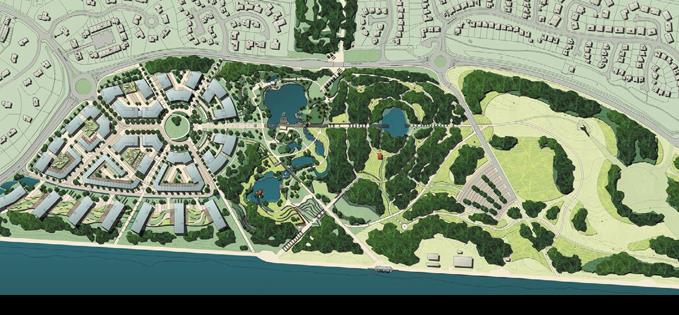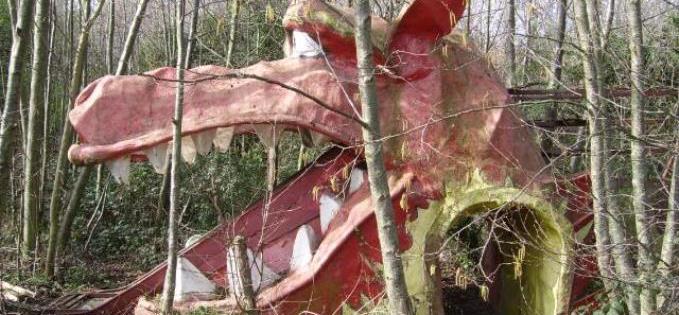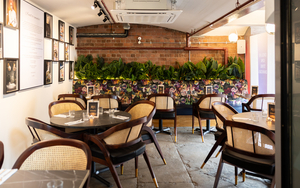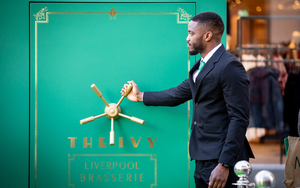AN open air stage and public art gallery could transform Liverpool’s Festival Gardens site into a “world-class cultural destination” under plans being considered by the city council.
Mayor Joe Anderson wants it to buy the former rubbish dump from developer Langtree - to create green public space which could become “an extension of the city’s current theatrical, musical and public art offer”.
No price tag has been mentioned but officials are said to be in advanced talks with Langtree to acquire the land, some of which would also be used to develop “quality" housing on the banks of the Mersey.
Under the plans, approximately 28 acres of the site would be used for housing development, with 66 acres being protected as open space.
The proposal is to be considered by the city council’s Cabinet next Thursday (April 2), with a recommendation that the purchase be approved subject to a survey of the site and due diligence.

Langtree says it is currently considering all options for the site and has been in dialogue with a number of potential partners.
Mayor Anderson said: “We have a unique opportunity to create a special open air venue which would be an important addition to the city’s cultural offer.
“We think the proposal on the table now represents a very positive way forward and that the city council is well placed to drive the potential of the site as both a visitor attraction and a development asset.”
A report to the council’s cabinet adds: “The site represents some unique opportunities for cultural events, concerts, exhibitions and community engagement. Because of the nature of the site it could be an extension of the city’s theatrical, musical and public art offer.
“Examples could be holding an artist in residence programme working in partnership with the Universities and using the site as a vibrant outdoor classroom with activities for school children through to adults enabling them to experience the diverse horticulture of the site.
“An opportunity also exists for Culture Liverpool to work with Liverpool Biennial and Tate Liverpool to develop a coherent and integrated approach to the development of the Festival Gardens site as a unique and world-class cultural destination.
“Ideas could include an outdoor gallery of public art commissions. The site could then operate as an interactive artists’ playground for children, families and adults.”
A detailed and extensive master-planning process involving Langtree and Liverpool City Council culminated in a planning application being submitted in November 2006 for the development of 1,308 apartments and 66 town houses.
Included within the plans were proposals to restore the Chinese and Japanese gardens, the lake and the creation of new woodland walks.
It was approved by the city council in May 2007 but was later called in for a public inquiry, with final consent being granted in July 2008, during the onset of the credit crunch and global recession.
Said Mayor Joe: “The collapse of the housing development market brought about by the credit crunch in 2008 unquestionably created major challenges for all the partners who were involved in trying to bring forward plans for this site."
The Laz Word...on the buying and selling of green space

WHEN the gates were finally closed in 1984 at the hugely successful International Garden Festival at Otterspool, the question arose about what would happen to the site.
A vast wilderness along the banks of the Mersey, which for decades had been the city’s main landfill dump for household waste, had been transformed into a magical parkland. It was one of Michael Heseltine’s responses to the Toxteth riots of 1981, a way of showing to the world Liverpool was back in business, opened by the Queen in the summer of 1984.
More than 3m people visited the festival gardens during the six months it was open. In the mid-1980s when the question of its future use was on the agenda, the city council was led by the Militants.
Some cynics may well say this will enable the council to proclaim it has taken ownership of green space, perhaps justifying its controversial plans to flog Sefton Park Meadows and even Walton Hall Park
The gardens could have been handed to the city council for free, but the council walked away from any deal. Some may have thought it was an act of spite by the Militants, refusing to take ownership of anything paid for by the Thatcher Government.
But there was another issue to contend with, the methane gas beneath the one-time tip, gas generated by the natural processes of decomposing household waste. A series of pipes were laid to channel the gas to a power station where it was used to fuel generators.
Who would be responsible in the future, should the methane ever become a problem, was one of the questions councillors and officials had to grapple with.
The Merseyside Development Corporation, custodians of the festival site, worked with a private company to create Pleasure Island, a garden-themed tourism destination, using the large dome as an indoor arena. It did not last long.
Finally development company Langtree came along, with a deal to build riverfront homes along the prom, the restoration of the rest of the festival gardens part of the deal.
True to its word Langtree did restore the gardens, now open to the public.
Some cynics may well say the council acquiring the festival site – no price tag has yet been mentioned – will enable the council to proclaim it has taken ownership of green space, perhaps justifying its controversial plans to flog Sefton Park Meadows and even Walton Hall Park for the new Everton Stadium.
Those same cynics may well ponder why the council needs to sell the Meadows when quality housing is already earmarked for the promenade.















